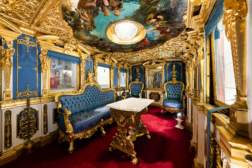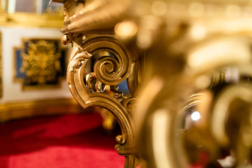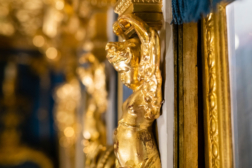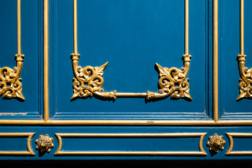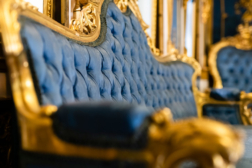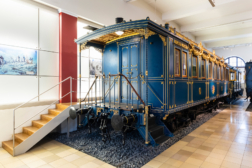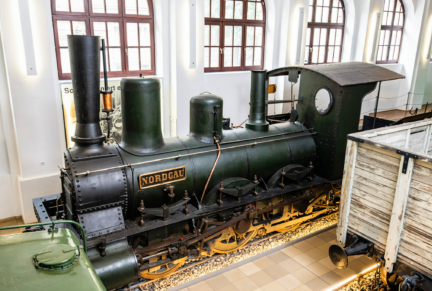Saloon and veranda coach of King Ludwig II of Bavaria
Versailles on wheels
1860
The "fairytale king" – Ludwig II of Bavaria – is famous above all for his lavish castles and palaces. Less well known are the no less magnificent railway vehicles built for him. These two sumptuously designed railway carriages are the only vehicles that have been preserved from the former Bavarian royal train.
Ludwig II inherited the royal train from his father Maximilian II when he took the throne in 1864. Over the next few years, he had it extended and refurbished in the pomp and splendour of the French Baroque. Ludwig commissioned the veranda coach shortly after taking office. It was delivered in 1865. The saloon coach built for Maximilian by the Nuremberg factory Klett & Comp. in 1860 was lavishly refurbished from 1868 to 1870. For the redesign, Ludwig II engaged the theatrical scene painter Franz von Seitz, who was a professor at the Munich Academy of Fine Arts and artistic director of the court theatre. On the king's instructions, the artist took his cue from the Palace of Versailles belonging to France's "Sun King" Louis XIV. This later earned the coach the popular nickname "Versailles on wheels".
Little is known about Ludwig's travels on the royal train. It is documented that he took his famous trip to Franconia with it in 1866. However, this journey predated his modifications to the saloon coach. In later years, Ludwig usually travelled incognito. As his royal train was far too conspicuous for this purpose, he used an "incognito train" consisting of simple passenger coaches.
After Ludwig II's death, his royal train was kept in full working order until 1918. It was clearly still in use at this time, as all the coaches were modernised between 1891 and 1893. The saloon coach was fitted with modern bogies and Westinghouse air brakes during this period.
After the end of the monarchy, the saloon car and veranda coach came to the Nuremberg Transport Museum. The museum building was damaged in a bomb attack towards the end of the Second World War. In the wake of the attack, looters removed everything they could transport, including all the floor coverings, the silk wall coverings, the marble tables and the paintings in each corner of the saloon car ceiling. The artworks were reproduced, and the decorative elements restored and re-gilded in time for the Transport Museum's reopening in 1953. Mirrors, marble and putti were added, and all floor coverings and fabrics were renewed.
